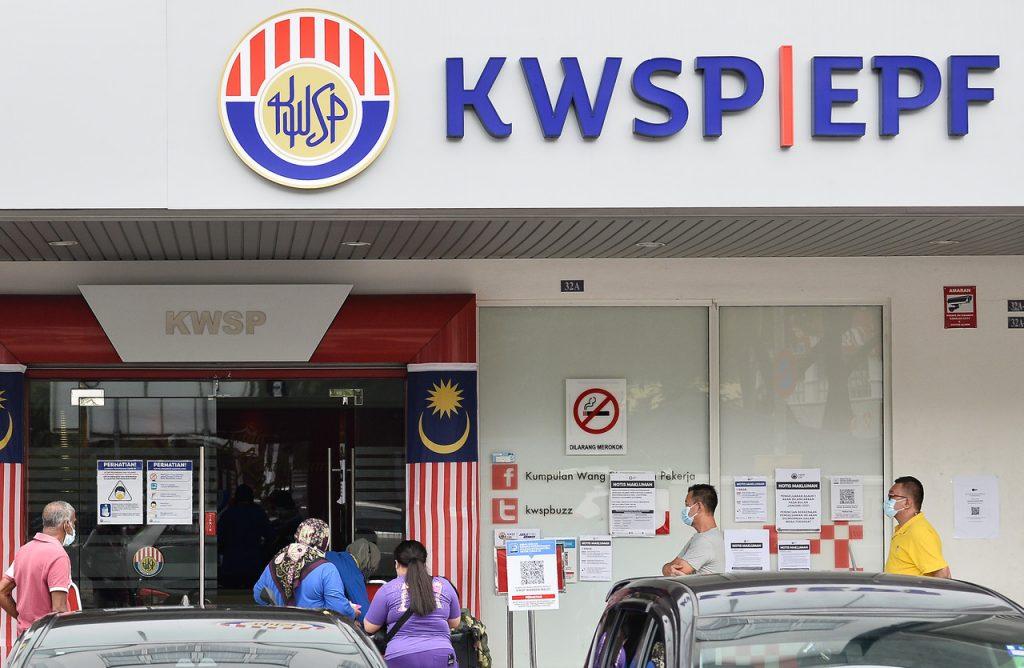Where i-Sinar went wrong
The economy should be stimulated through investments in areas that have been neglected, not through use of EPF savings in wasteful consumption.
Just In
It was reported in the media that i-Sinar withdrawals from the Employees Provident Fund’s (EPF) accounts have a “positive immediate impact on the real economy as it supported domestic consumptions”. The economy should be stimulated through investments in areas that have been neglected, eg. agriculture, healthcare, elderly care, and not through using EPF savings in wasteful consumption.
We wish to state our stand that since i-Sinar has been allowed to be withdrawn by the government, the reasons must be specific: 1) for the sustenance of the EPF contributor’s livelihood during periods of pay cuts or being jobless; 2) for business start-ups; and 3) to service loans to avoid accumulating compound interest.
It was reported that as of March 14, 5.94 million applicants for the i-Sinar scheme had been approved involving a total of RM52.48 billion. This figure is alarming because there are an estimated 6.4 million active EPF contributors, meaning that 93% of these contributors have withdrawn from their savings.
However, as we expected, many Malaysians lacking financial literacy and discipline have treated the money from i-Sinar as a windfall. With the money they bought cars, splurged on shopping (particularly for the coming Raya and Ramadan), and invested in stocks, gold and cryptocurrencies. These people may not have any more savings to fall back on should there be another outbreak, let alone when they retire.
The i-Sinar applicants ignored the fact that:
· Cars instantly depreciate in price upon purchase regardless of the value of the car.
· Stocks are very risky as the market can be volatile and uncertain.
· Bank Negara Malaysia specifically stated that the bitcoin is not recognised as legal tender and warned the public of the risks associated with the use of such cryptocurrency.
· Gold is considered “a very low-yield investment because its price does not increase very fast under normal circumstances”. The price of gold jewellery includes labour charges depending on the design of the item but when it is re-sold to the goldsmith or taken to a pawnshop, the item will only be assessed basing on the pure gold content. Hence, when gold jewellery is sold or pawned, the person is certainly going to make a loss at least from the labour charges which constitutes a large portion of the purchase price unless gold prices go up significantly.
· Splurging on shopping using i-Sinar withdrawals is financial suicide because most, if not all, of consumer items have a limited lifespan or shelf life and with very little or no resale value. However, according to a report quoting the Malaysia Retail Association, there was an 80% increase in business at shopping malls compared to pre-pandemic levels.
These people who spend their retirement funds from i-Sinar may not have any savings to fall back on if there is ever another outbreak, let alone when they retire. Moreover, Malaysia is still far from bringing down new Covid-19 infections to one digit.
In reality the Covid-19 pandemic is far from over as India, Pakistan, Bangladesh, Indonesia and the Philippines are experiencing a new wave of infections after a significant drop in the number of cases for the past few months. Europe recently experienced a third wave.
Malaysia is expected to have almost 500,000 people vaccinated by mid-April. However, this would constitute a mere 2% of the estimated 25 million people (80% of the total population) who would be vaccinated. It is not known when we are going to achieve the desired herd immunity as the World Health Organization (WHO) has expressed concern that achieving herd immunity could be difficult for developing countries in the Asia-Pacific region.
Money from i-Sinar is not meant to be used to save the domestic economy through wasteful spending but for retirement. That is the time when people have minimal or no income to sustain themselves or for the treatment of diseases associated with old age.
CAP is shocked that it is from EPF Account 1 which holds 70% of the EPF contributor’s savings that people are withdrawing and whose primary objective is for retirement savings. Account 2, on the other hand, comprises the remaining 30% of contribution. It allows the contributor to withdraw for either housing, education, medical, or for haj. Otherwise, the contributor can make a partial or full withdrawal of savings in Account 2 upon reaching the age of 50. i-Sinar allows the contributor to have access to 10% of Account 1 savings as long as there is a minimum balance of RM100.
People who made withdrawals from Account 1 are blissfully disregarding the fact that their future EPF contributions will be deposited entirely into their Account 1 instead of being split 70:30 into Accounts 1 and 2 respectively. In other words, these people will have less in their Account 2 which will negatively impact their withdrawals for any of the five of the specific needs.
The government should not even for a moment consider EPF contributors as “white knights” rescuing the domestic economy because they will unwittingly be turned into sacrificial lambs instead.
Mohideen Abdul Kader is president of the Consumers Association of Penang.
The views expressed in this article are those of the author(s) and do not necessarily reflect the position of MalaysiaNow.
Subscribe to our newsletter
To be updated with all the latest news and analyses daily.
Related Articles
Most Read
No articles found.
